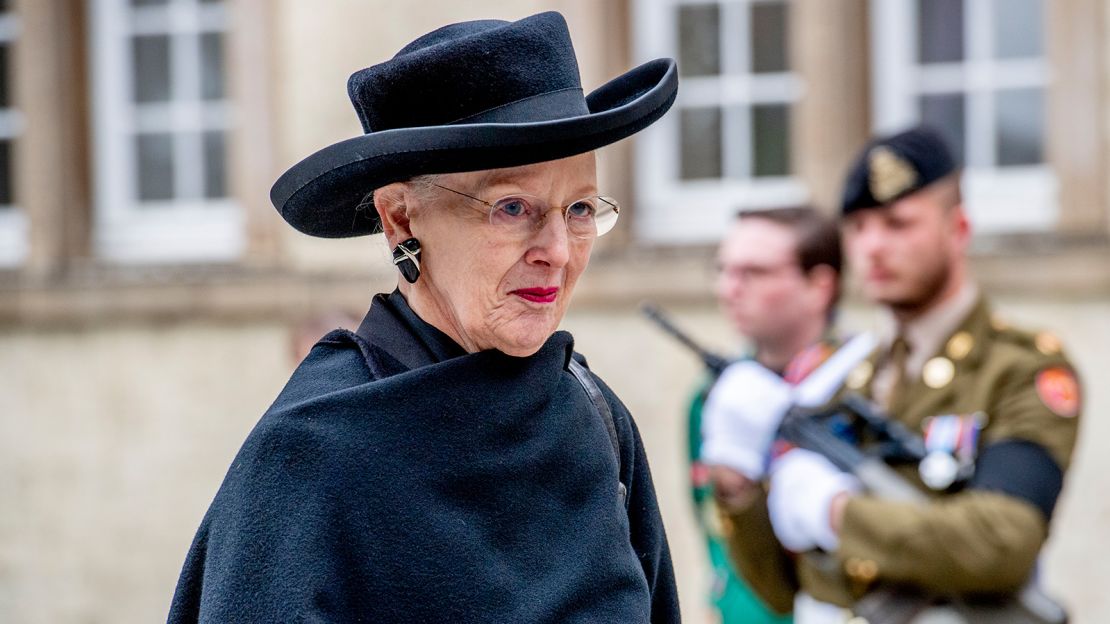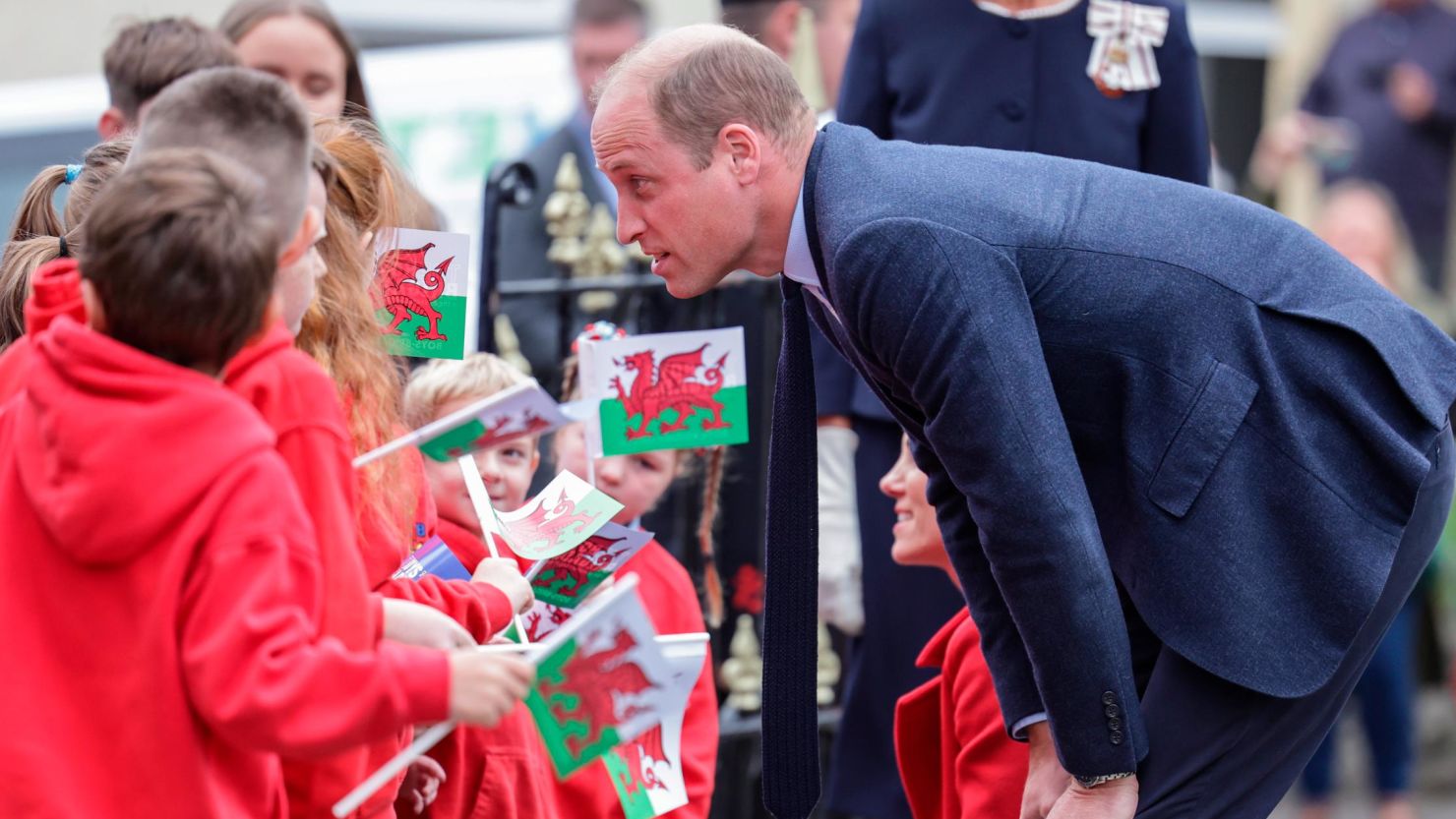A version of this story appeared in the September 30 edition of CNN’s Royal News, a weekly dispatch bringing you the inside track on Britain’s royal family. Sign up here.
A sense of normality slowly returned to the monarchy this week, as the royals’ extended period of mourning following the death of Queen Elizabeth II came to an end.
And, in turn, a fresh era began for the new Prince and Princess of Wales.
William and Catherine visited Wales this week for the first time since the Queen’s death, an important initial trip that they probably hope will set the tone for their new roles.
There was plenty of appreciation for the pair. Large crowds turned out to cheer their arrival in Anglesey and Swansea, where the royals greeted well-wishers and visited local charities.
“Today’s visit is history. We had to be here,” Rebecca Crompton, whose son presented a bouquet of flowers to Kate, told the PA Media news agency. “We were actually on the way to school when I changed my mind and decided to bring him down here for a once-in-a-lifetime opportunity.”
But as they grow into the positions, William and Kate will chart their own course as the Waleses, prince and princess of a nation that is generally supportive of the monarchy and the union but also retains a strong identity separate from the rest of Britain.
Their success in the role will be of vital importance to the monarchy, which will be eager to keep a firm foothold in every part of the United Kingdom even as the question of independence swirls in Scotland and, increasingly, in Wales, too.
CNN understands that, despite the then-Prince Charles having been given a grand investiture ceremony by the Queen when he became Prince of Wales in 1969, there are no plans for an investiture for William.
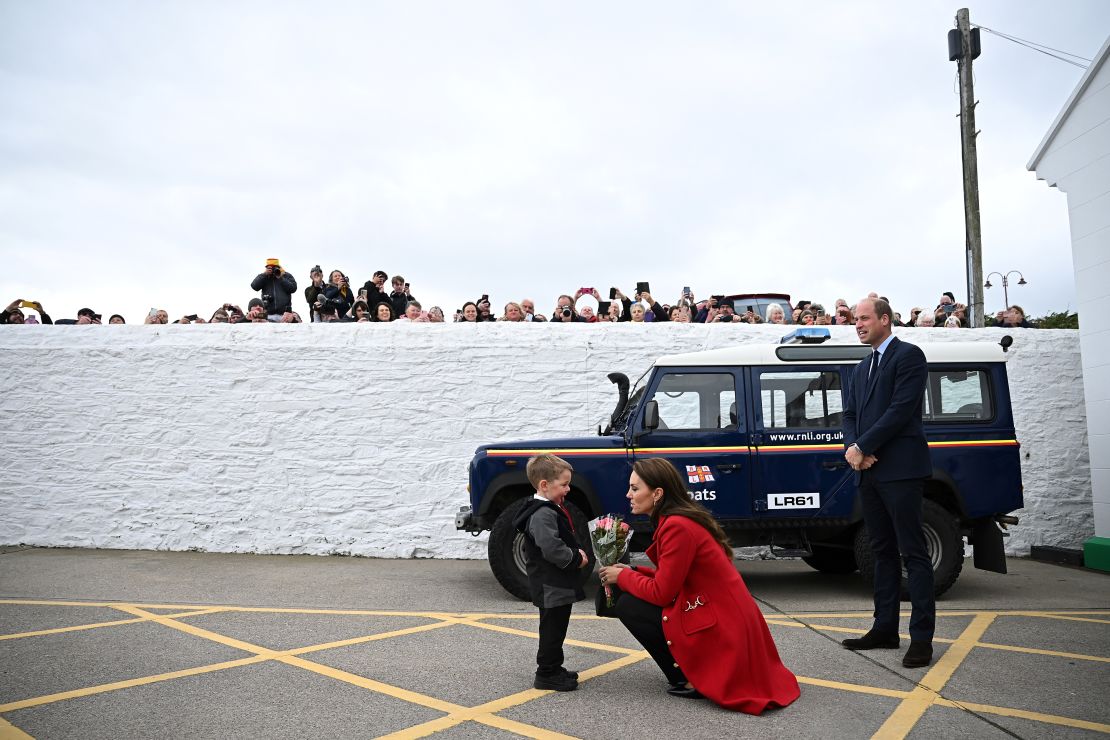
Charles’ own investiture at Caernarfon Castle saw protests by Welsh nationalists, who objected to a new Prince of Wales. The title has been traditionally bestowed on the heir to the throne since the 1300s, shortly after the English crown annexed Wales, which borders western England. The two nations have generally enjoyed a close legal and political relationship, but nationalist opposition toward English rule has always been present, too.
Instead of an investiture, William and Kate will focus on deepening the trust and respect of the people of Wales over time, and will return to the nation before Christmas, CNN understands.
That process apparently includes learning the language. Reverend Steven Bunting, who welcomed the couple at St. Thomas Church in Swansea on Tuesday, told PA Media: “The Prince of Wales was even talking about learning Welsh, and said he’d learned the word ‘paned’ meaning cup of tea and ‘bara brith,’” a traditional tea bread.
“I think he’s taking being Prince of Wales very, very seriously,” Bunting said.
William is following in the footsteps of his father, who famously studied Welsh at Aberystwyth University. The traditional language has seen a revival in recent years, driven particularly by young speakers – another symbol of the distinct culture of the nation.
Support for independence is also growing among Wales’ three million inhabitants, studies have shown, and senior politicians in the region have long pushed for increased political devolution and decision-making powers.
And while nationalism doesn’t always go hand in hand with republicanism, there are signs that William and Kate will have to face that, too.
Some anti-monarchy protesters made their voices heard during Charles’ first visit to Cardiff as King earlier this month, with one heckling him face-to-face about public taxes funding the monarchy. An online petition to scrap the Prince of Wales title “out of respect to Wales” has, meanwhile, gathered more than 35,000 signatures in three weeks.
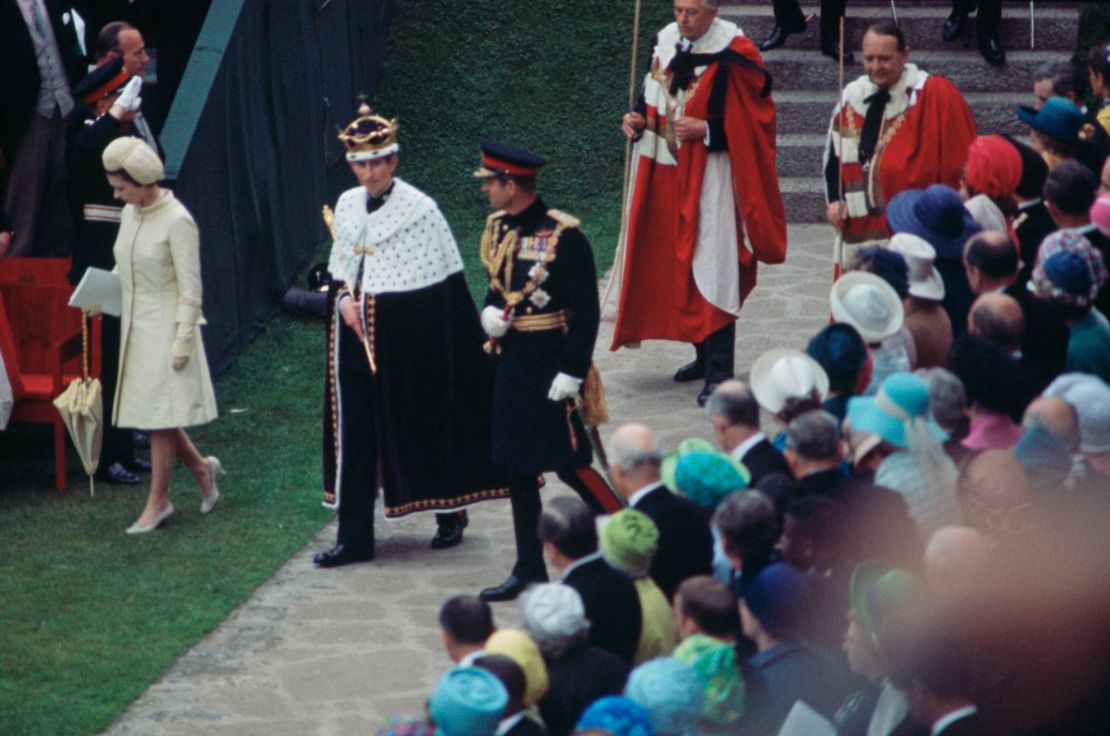
Keeping the nations of the UK together is an increasingly high priority for Britain’s major political parties, and the royals play a key role.
The late Queen’s deep links to Scotland were often raised as a symbol of English-Scottish closeness when the issue of a vote on independence flared up there. The monarchy and Downing Street alike will hope that a similar relationship can be maintained by William and Kate in Wales.
In many ways, it’s a position for which the couple are well prepared. William and Kate lived on the picturesque Welsh island of Anglesey before the birth of their first child, George, allowing them to enjoy a relatively normal life away from the glare of paparazzi.
The prince rented a cottage there and was able to drive himself to work and socialize with his friends in the Royal Air Force, while Kate would be spotted shopping in the local supermarket, CNN reported back in 2011. Their presence generally failed to bother or impress the locals, who were pretty blasé about their royal neighbors.
But in their new roles, and with William now the heir to the throne, things will be very different – and any visit to Wales will take on extra importance.
The Queen died of old age, death certificate confirms.
The cause of Queen Elizabeth II’s death has been listed as old age on her death certificate, which was released on Thursday.
Elizabeth died at 3:10 p.m. local time (10:10 a.m. ET) on Thursday, September 8, at Balmoral Castle, the document said. She was 96.
Her death was announced by Buckingham Palace just over three hours later.
The Queen’s daughter, Princess Anne, signed her death certificate. Anne accompanied her mother’s coffin on every leg of its journeys through Scotland and London, until it was buried at Windsor Castle.
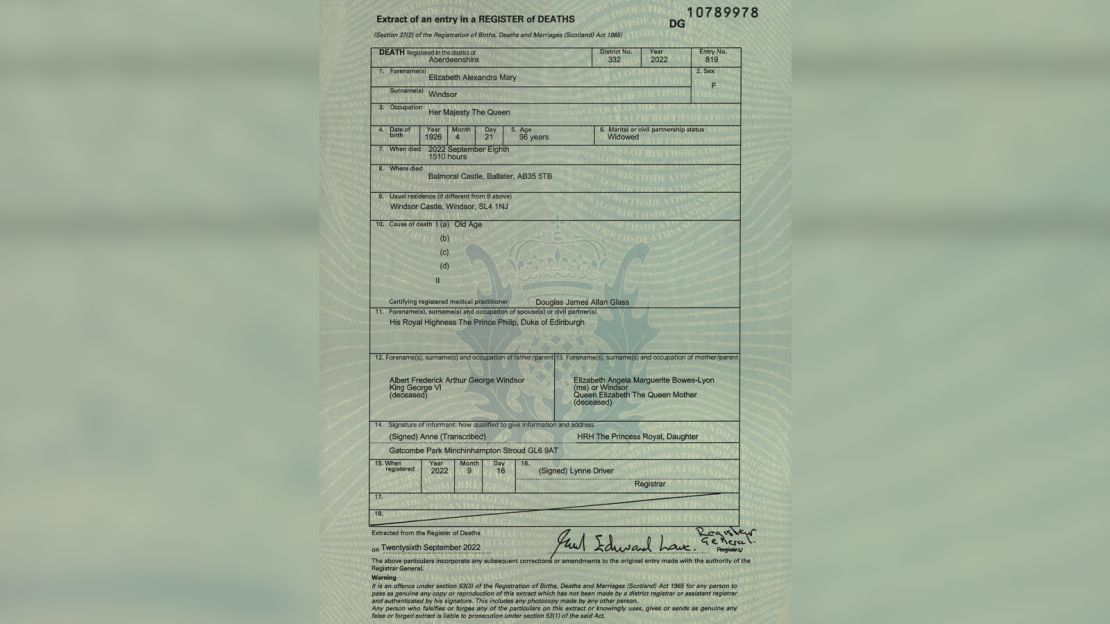
New coins bearing King Charles III’s image revealed.
The first British coins depicting the new King have been unveiled by the Royal Mint in London.
A special £5 coin and a 50 pence piece were displayed by the mint, showing Charles’ profile. As per tradition, he is facing the opposite direction to the previous monarch – and because he is a male monarch, he is not wearing a crown.
British rulers have been depicted on coins for more than 1,100 years, starting with Alfred the Great in the ninth century, according to the Royal Mint.
The Queen’s profile had become ever-present in British public life over the past seven decades, but the visual identity of Charles III’s reign has started coming together over the past week – and coins are just one part of it.
On Monday, the new royal cypher was unveiled. The image is used on letterheads, British government buildings, state documents and mailboxes, and replaces Elizabeth’s E II R symbol.
And on Tuesday, the Royal Mail announced that Charles’ image will feature on its “everyday” stamps.
“Royal Mail will reveal the image and timings of the new Definitive stamps and the new silhouette in due course,” the postal service said in a press release.
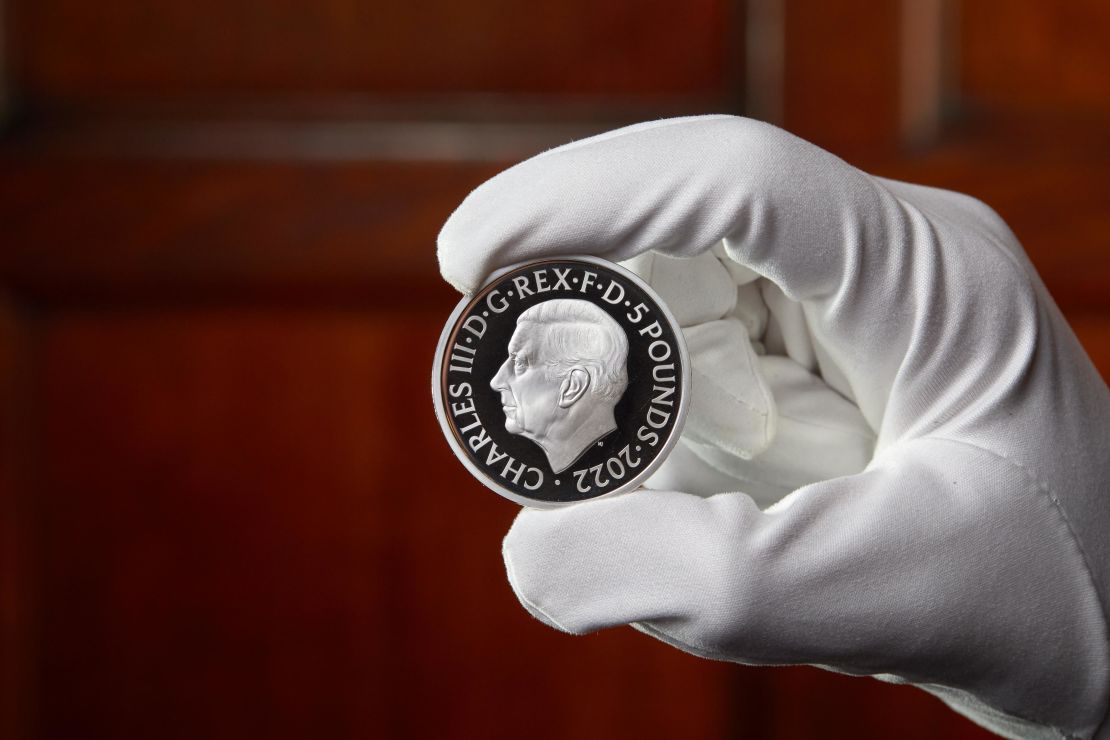
Royal supporters line up in Windsor to see the Queen’s final resting place.
Perhaps the most enduring symbol of Britain’s response to the Queen’s death was “The Queue” – a miles-long line that snaked along the Thames river in London, made up of mourners desperate to pay their respects at the monarch’s lying-in-state.
But Britain’s well-known penchant for queuing didn’t end there. Following Elizabeth II’s burial last Monday, a new, more modest line has emerged – this time occupied by people who want to visit her grave within St. George’s Chapel in Windsor Castle.
The Castle’s grounds opened to the public Thursday for the first time since the Queen’s death. “The castle feels, like, empty, gloomy. Nobody’s living in it,” the first person in the queue – Anne Daley, 65, from Cardiff, Wales – told PA Media. “You know, you’ve lost the Queen, you’ve lost the duke, you lost the corgis.”
“It’s like when you’ve sold your house and all the history is gone,” she said.
The line to enter the castle ran throughout the grounds of the building and beyond, PA reported.
An engraved ledger stone featuring the name of the late monarch was installed in the King George VI Memorial Chapel, an annex to the main chapel, after a private service attended by her family.
The slab is hand-carved from Belgian black marble and features brass letter inlays reading the names of her parents – King George VI and Queen Elizabeth – followed by the late Queen’s name along with that of her husband, Prince Philip. A garter star separates the two royal couples, and the years of birth and death have been inscribed next to each name.

Postcards from royals around the globe.
A rift has emerged in the Danish royal family following a decision by Queen Margrethe to strip four of her eight grandchildren of their royal titles in order to “future-proof” the monarchy.
The 82-year-old monarch, who this year celebrated half a century on the throne, announced on Thursday that from next year the children of her younger son, Prince Joachim, will no longer be known as prince and princess.
The reason for the move, according to an announcement from the Danish royal household, is to allow the junior royals to lead more normal lives; it also follows similar decisions by other royal families to slim down their monarchies.
The announcement explained: “The Queen’s decision is in line with similar adjustments that other royal houses have made in various ways in recent years.”
In a telephone conversation with CNN, Helle von Wildenrath Løvgreen, press secretary to Joachim’s ex-wife, Countess Alexandra, said the countess was “very sad and in shock” that two of her children will lose their titles, along with the children of her ex-husband.
“She can’t believe why and why now, because there’s no good reason. They would lose their titles anyway when they get married one day. Her sons are young men so maybe they might get married in the near future so why shouldn’t it wait until that day so that the titles would disappear on a happy day?”
